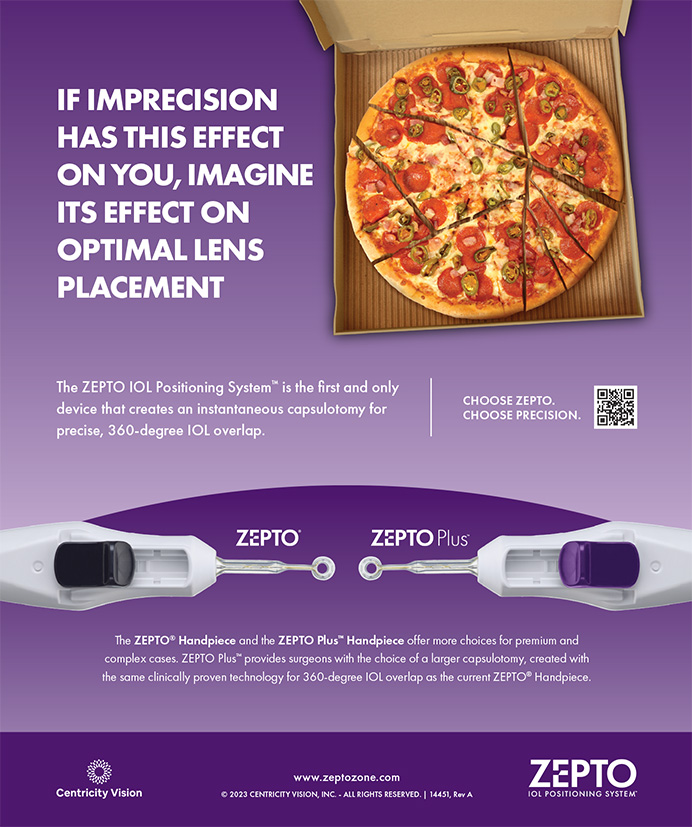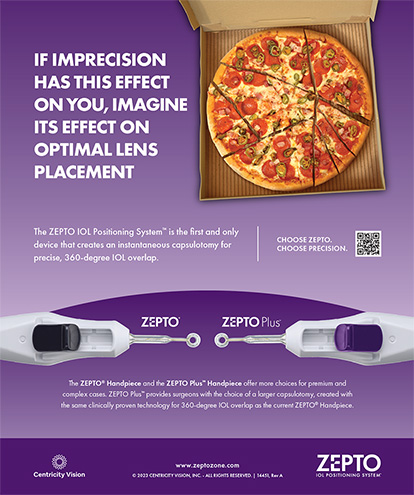Refractive Surgery | Sep 2005
Tackling World Blindness
Geoffrey Tabin, MD
Eye care is one of the greatest public health challenges of the 21st century. Fifty million people in our world suffer in needless darkness, and the vast majority of them will remain blind until they die.1 Ninety percent of this blindness could have been easily prevented or is treatable.1 Half of these cases involve cataracts, and perfect sight may be restored by means of inexpensive surgery.2,3 Several studies have shown that sight restoration with cataract surgery is one of the most cost-effective interventions in healthcare.4-6 Preventing visual loss from other major blinding diseases—trachoma, onchocerciasis, and vitamin A deficiency—ranks with childhood vaccinations among the most efficacious prophylactic treatments.4,7 Although the numbers are daunting, eliminating blindness from our world is a realistic objective. By establishing the Vision 2020 initiative, the World Health Organization (Geneva, Switzerland) and the International Agency for the Prevention of Blindness (Hyderabad, India) have set the goal of overcoming needless sight loss by the year 2020.
However, there are more blind people in our world today than when Vision 2020's efforts began 5 years ago. Although significant headway is being made in the fight against several forms of infectious and nutritional blindness, a steady rise in blindness among people who are surviving with HIV and diabetes can be observed as well. The quality of cataract surgery is improving, as is the rate of surgeries being performed, but many of these procedures are executed on people with only mild visual impairment in the developing world who can afford them. Conversely, the rate of surgeries performed on the destitute, who are rendered completely blind, is not increasing. Thus, the incidence of cataract-causing blindness continues to grow every year. If the current rate of operation is maintained, in view of increases in life expectancy, the number of people blinded by cataracts will more than double by 2020. Moreover, if the same standards that are required for a patient in the US to be considered a surgical candidate are applied to the destitute of the world, the number of qualified individuals who are waiting for cataract surgery is staggering. Well over 100 million poor people would currently meet the presurgical criterion of having difficulty working a job that demands reasonable vision!
This issue will focus on what is currently being done to defeat many of the greatest challenges that are impeding the elimination of needless blindness in our world. Cataract & Refractive Surgery Today is privileged to have many of the world leaders in international eye care share their thoughts on these topics. Professor Gullapalli N. Rao, MD, from Hydrababd, India, is the Director of the International Agency for the Prevention of Blindness and Vision 2020. He has outlined the aims of the Vision 2020 program. Next, Professor Hugh R. Taylor, AC, MD, from Melbourne, Australia, reviews the economic impact of blindness and the current situation in the fight against Trachoma. David Chang, MD, of Los Altos, California, provides his thoughts on adult cataracts; M. Edward Wilson, Jr, MD, from the Storm Eye Hospital in Charleston, South Carolina, addresses pediatric blindness and childhood cataracts; Professor Rasik Vajpayee, MBBS, MS, FRCS(Ed), from New Delhi, India, concentrates on corneal blindness; Marc Lieberman, MD, from San Francisco, focuses on the challenges of glaucoma in the developing world; Kang Zhang, MD, PhD, of Salt Lake City, explores the emerging problem of diabetic eye disease in the world's poor countries; and Albert Vitale, MD, also of Salt Lake City, summarizes the increasing global impact of HIV.
In the future, this column will focus on an issue or program that is related to the objective of eliminating preventable or treatable blindness from our world. Not long ago, it was a common expectation in Nepal that as people grew older their hair would turn white, their eyes would turn white, and then they would die. Although death is still inevitable, blindness should not be a definite byproduct of a long life. Together, we can make a difference!
Geoffrey Tabin, MD, is Professor of Ophthalmology and Visual Sciences and Director of International Ophthalmology at the John A. Moran Eye Center at the University of Utah. He is also the Co-Director of the Himalayan Cataract Project. Dr. Tabin may be reached at (801) 581-2352; geoffrey.tabin@hsc.utah.edu; cureblindness@hotmail.com.
1. West S, Sommer A. Prevention of blindness and priorities for the future. Bull World Health Organ. 2001;79:244-248.
2. Brian GR. Bringing the benefits of cataract surgery to the third world. Ophthalmol Clin North Am. 2000;13:141-150
3. Ruit S, Tabin GC, Nissman SA, et al. Low-cost high-volume extracapsular cataract extraction with posterior chamber intraocular lens implantation in Nepal. Ophthalmology. 1999;106:1887-1892.
4. Jamison DT, Mosley WH, Measham AR, Bobadilla LJ. Disease Control Priorities in Developing Countries. New York, NY: Oxford University Press; 1993.
5. Javitt JC. The cost effectiveness of restoring sight. Arch Ophthalmol. 1993;111:1615.
6. Baltussen R, Sylla M, Mariotti SP. Cost-effectiveness analysis of cataract surgery: a global and regional analysis. Bull World Health Organ. 2004;82:338-345.
7. Bailey R, Lietman T. The SAFE strategy for the elimination of trachoma by 2020: will it work? Bull World Health Organ. 2001;79:233-236.


